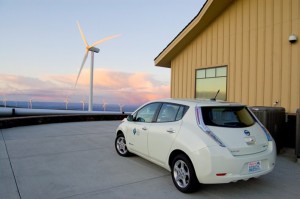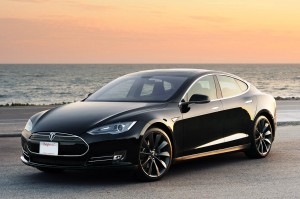Some good laws are now in effect on both rooftop solar and electric vehicles in California. I blogged about AB 2188 once it passed the California Legislature, which will require local governments to adopt streamlined ordinances for permitting rooftop solar. The governor signed it, which will be helpful for reducing the cost of installing solar, possibly up to 20 cents per watt.
 In addition, as I discussed on KCRW radio on Monday, the governor signed AB 2013 (Murastsuchi) to increase the number of “green stickers” available for partial electric/hybrid vehicles to access carpool lanes, as well as SB 1275 (De Leon) to limit cash rebates for electric vehicles based on income. The latter bill directs the California Air Resources Board to come up with an overall, long-term financial plan for supporting electric vehicles, taking into account anticipated price declines on the vehicles. That plan will likely include a phase-out for the rebates and may explore other options, such as point-of-sale cash rather than having to apply for the rebate after purchase.
In addition, as I discussed on KCRW radio on Monday, the governor signed AB 2013 (Murastsuchi) to increase the number of “green stickers” available for partial electric/hybrid vehicles to access carpool lanes, as well as SB 1275 (De Leon) to limit cash rebates for electric vehicles based on income. The latter bill directs the California Air Resources Board to come up with an overall, long-term financial plan for supporting electric vehicles, taking into account anticipated price declines on the vehicles. That plan will likely include a phase-out for the rebates and may explore other options, such as point-of-sale cash rather than having to apply for the rebate after purchase.
With these bills, California is continuing its leadership on renewables and electric vehicles, and hopefully making our public sector incentives more efficient and streamlined in the process. I’m glad the governor signed them, showing that we’re making incremental progress on these vital technologies.
The California Legislature passed SB 1275 (De Leon) last week, which would give the California Air Resources Board authority to eliminate the cash rebate incentive for wealthy people who buy electric vehicles. It would then use that revenue to increases the cash incentives for lower-income Californians.
I debated the merits of this approach on KPCC radio last month on the Airtalk program. My write-up of the debate is here. Meanwhile, Grist celebrates that electric vehicles won’t be “pretentious” anymore, as if the Nissan LEAF and Chevy Volt were glamor cars.
As I noted in my write-up, half of all Tesla Model S purchasers reported that the rebate made no difference in their decision. So why not use those funds for people who are truly on the fence without additional rebate money? The goal here for everyone should be to maximize the effectiveness of these limited rebate dollars and spur the greatest adoption possible of electric vehicles. The details will be figured out by agency experts, and that sounds fine to me. The governor has until the end of the month to sign.



